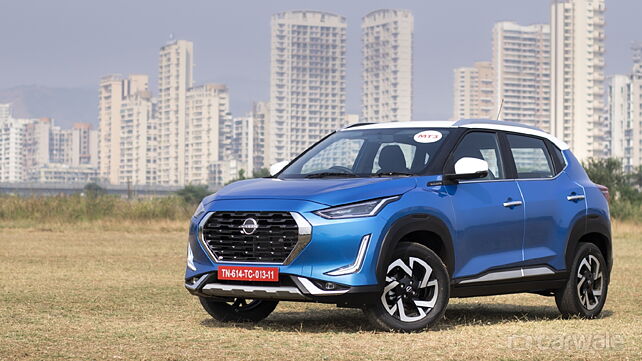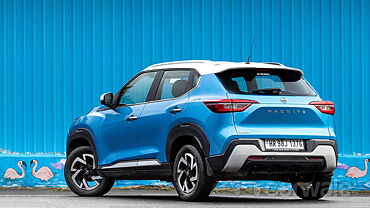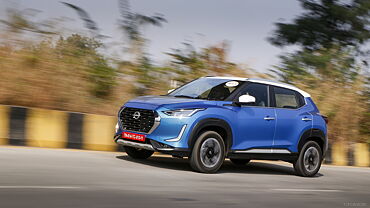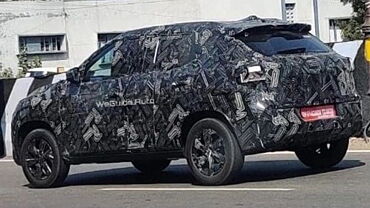
As an auto enthusiast, I often wonder as to what it takes to build a good car. In the week gone by, I had an opportunity to visit the RenaultNissan Automotive India Private Limited (RNAIPL) facility in Oragadam, Chennai to witness the production of the segment disruptor, the Nissan Magnite. The capacity is equally divided between Renault India Private Limited and Nissan Motor India Private Limited. Launched in December 2020, the Nissan Magnite is a game-changer for the company in India. One of the interesting facts that caught our attention was that the facility is capable of producing a Magnite in less than five minutes.

Do’s and don’ts
Prior to entering the production unit, we were provided with safety helmets, shoes, protective spectacles, and arm sleeves. To avoid accidents due to cellphone use, the facility does not permit mobile phones in the work area. Clearly, safety is a priority at the Nissan facility in India. The factory also has a designated strip in green colour for walking.

Stamping Shop
The production facility has a systematic and simple layout that enables both Nissan and Renault to access various processing sheds. The first area within the facility was the stamping shop, where all the steel is processed and stamped. It is here where all the spare parts are manufactured, this also includes spare parts for the discontinued models such as the Sunny and the Micra.

Post-inspection, the parts are passed on to the next process – the body shop. Here, the robots take charge to ensure accuracy of up to 95 per cent while manufacturing these parts. The next in line is the paint shop wherein special care has been taken to keep it dust-free and void of contamination. Once the paint job is complete to the desired standards, the parts are then transferred to the Trim and Chassis line.

Trim and Chassis shop
To minimalise the errors, the robots ensure that the body parts are secured perfectly to the car. As the process is automated with predefined torque levels, the system detects faults or flaws and stops the assembly line with a red indicator flashing over the damaged component. Around the facility, one can also notice designated areas for supplier parts.

Moving forward, we come across the powertrain fitting assembly line. This area is dust-proof and pressurised to ensure that the engines are assembled in an error-free manner. Here the engines are also checked and tested for NVH, leaks, timings, and other parameters. It is here that you start seeing the car getting closer to being street-ready.

Final testing
Nissan India then commences with the testing of the vehicle on different parameters. On the basis of the random sampling method, selected units of the Nissan Magnite are put through the water wading test, wherein the vehicle is checked for any unexpected leaks within the vehicle’s floor. In case of issues, the entire batch will undergo necessary alterations.

Did you know?
Nissan has its own rainwater harvesting facility within the plant. The saved water is used in the manufacturing of the Magnite sub-four metre SUV. RNAIPL has an understanding with the Tamil Nadu government for unlimited water supply, however, Nissan chooses to pay a penalty of Rs 750 every month for not utilising the water supply from the government. Due to the strong demand for the Magnite, the plant now runs an extra shift to reduce the waiting period considerably.

![Nissan Magnite [2020-2024] Image Nissan Magnite [2020-2024] Image](https://imgd.aeplcdn.com/272x153/n/cw/ec/45795/magnite-exterior-right-front-three-quarter-11.jpeg?isig=0&q=80)















![Nissan Magnite [2020-2024] Right Front Three Quarter Nissan Magnite [2020-2024] Right Front Three Quarter](https://imgd.aeplcdn.com/199x112/n/cw/ec/45795/magnite-exterior-right-front-three-quarter-11.jpeg?isig=0&q=80)
![Nissan Magnite [2020-2024] Right Front Three Quarter Nissan Magnite [2020-2024] Right Front Three Quarter](https://imgd.aeplcdn.com/199x112/n/cw/ec/45795/magnite-exterior-right-front-three-quarter-4.jpeg?q=80)
![Nissan Magnite [2020-2024] Right Front Three Quarter Nissan Magnite [2020-2024] Right Front Three Quarter](https://imgd.aeplcdn.com/199x112/n/cw/ec/45795/magnite-exterior-right-front-three-quarter-5.jpeg?isig=0&q=80)
![Nissan Magnite [2020-2024] Dashboard Nissan Magnite [2020-2024] Dashboard](https://imgd.aeplcdn.com/199x112/n/cw/ec/45795/magnite-interior-dashboard-3.jpeg?q=80)
![Nissan Magnite [2020-2024] Steering Wheel Nissan Magnite [2020-2024] Steering Wheel](https://imgd.aeplcdn.com/468x263/n/cw/ec/45795/magnite-interior-steering-wheel-2.jpeg?q=80)



























